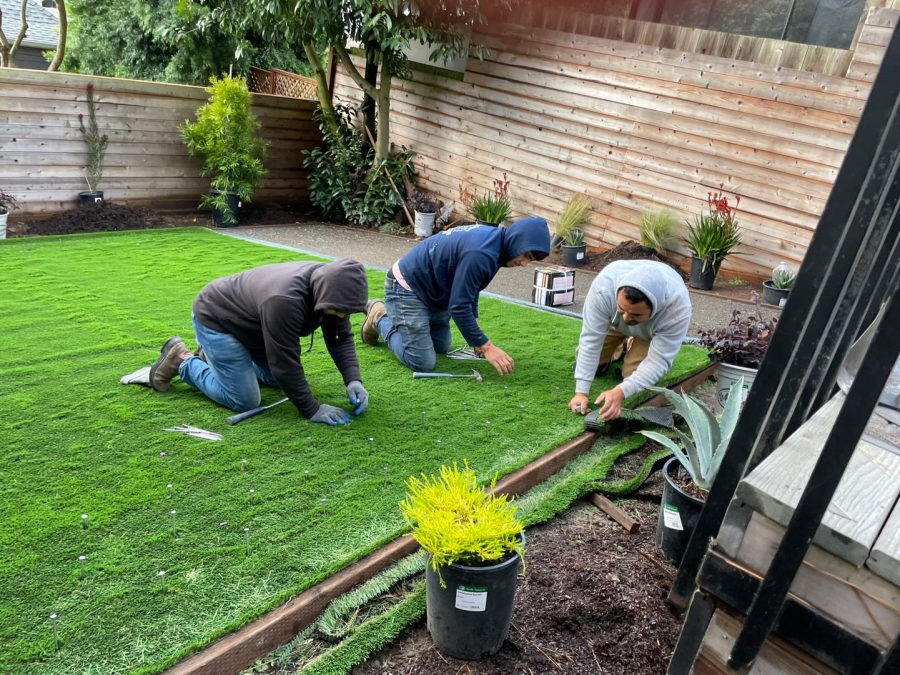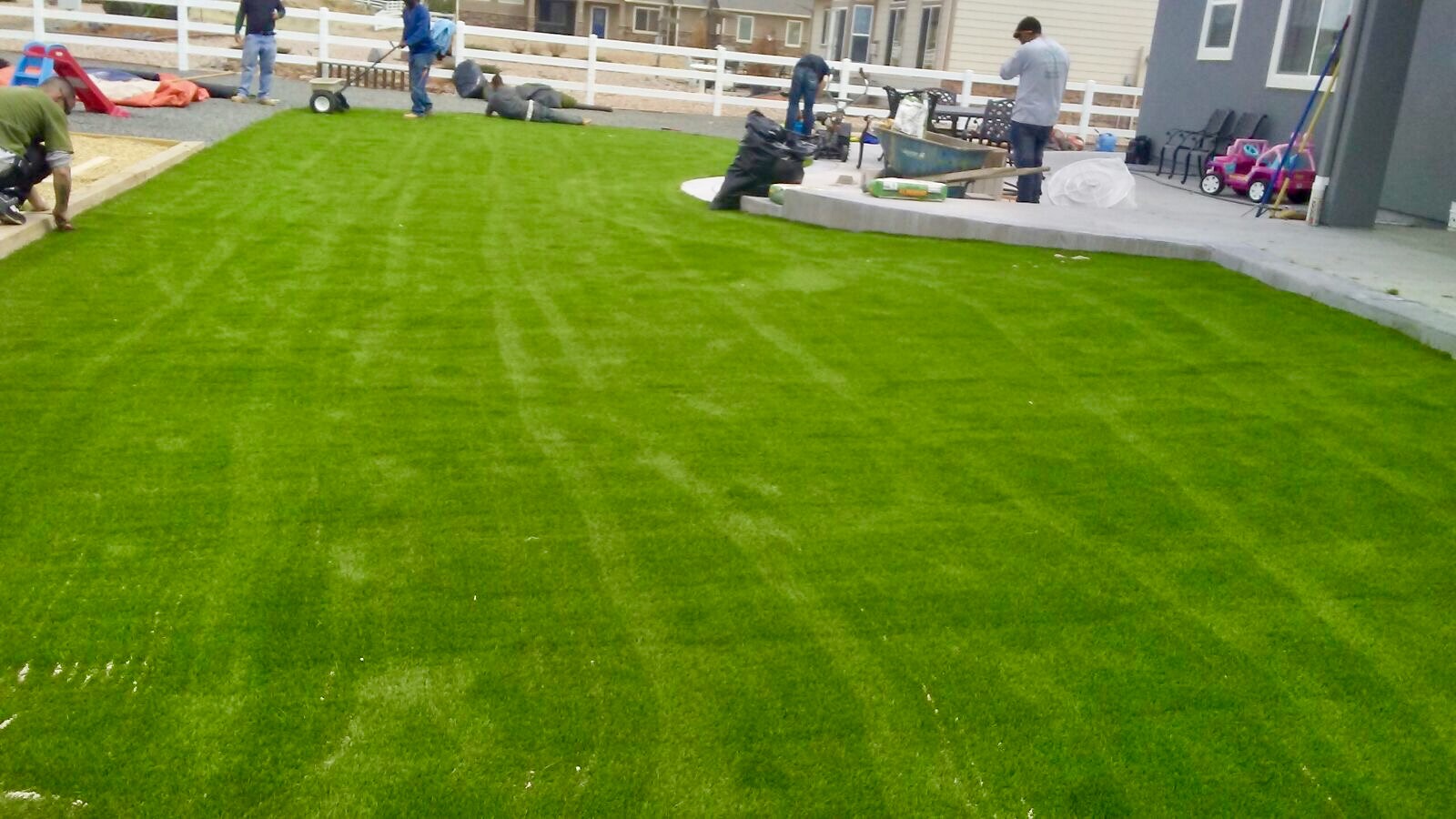Discover the Top Artificial Turf Companies Phoenix for Your House or Commercial Space
Discover the Top Artificial Turf Companies Phoenix for Your House or Commercial Space
Blog Article
Explore the Environmental Perks of Opting for Synthetic Grass Solutions
The fostering of man-made grass options provides a compelling possibility to address pushing ecological obstacles. By significantly lowering water use and decreasing the application of damaging chemicals, these options not just promote sustainable landscape design however also shield local environments.
Water Preservation Benefits
One of one of the most substantial advantages of artificial turf is its capacity to conserve water. Standard turf yards call for significant irrigation, specifically in locations prone to dry spell or water constraints. On the other hand, synthetic grass does not require watering, significantly reducing the total need for water resources. This function is specifically beneficial in dry regions where water shortage is a pressing concern.
By removing the requirement for normal watering, synthetic grass contributes to lasting landscape methods and helps alleviate the ecological influence of excessive water consumption. In addition, the preservation of water encompasses the reduction of drainage, which can result in soil erosion and waterway air pollution.
Additionally, the installment of synthetic grass allows towns and property owners to designate water sources more successfully, concentrating on important usages such as alcohol consumption water and farming. The shift towards synthetic grass not just promotes accountable water usage however additionally lines up with broader environmental objectives targeted at maintaining natural deposits.
As communities increasingly prioritize sustainability, the water conservation benefits of synthetic grass provide an engaging situation for its fostering in property and business landscaping projects.
Reduced Chemical Usage
The shift to synthetic grass significantly lowers the reliance on chemical treatments commonly made use of in all-natural grass upkeep. Conventional grass management usually entails the application of pesticides, fertilizers, and herbicides to advertise growth and control insects. These chemicals can present dangers to human health and wellness, local wild animals, and the atmosphere, adding to soil and water contamination.
In comparison, synthetic turf gets rid of the demand for these hazardous compounds. By decreasing the launch of artificial compounds into the ecosystem, man-made lawn promotes much healthier soil and water systems.
Additionally, the lack of chemical overflow related to synthetic grass installments assists safeguard regional rivers from pollution, sustaining marine life and preserving biodiversity. Arizona turf. As communities progressively focus on sustainable techniques, choosing man-made lawn presents a feasible solution that aligns with environmental conservation objectives. Through this shift, property owners can delight in rich green areas without compromising ecological health and wellness, leading the way for a much more sustainable future
Reduced Carbon Footprint

In addition, the setup of synthetic grass can result in substantial water preservation. Natural lawns need significant amounts of water for irrigation, which not only contributes to the carbon impact connected with water removal and therapy yet likewise pressures regional water resources. In comparison, synthetic grass requires minimal maintenance, calling for no watering, thus considerably lowering water usage and its associated power prices.
In addition, the durability of synthetic grass contributes to its reduced carbon impact. With a life-span of approximately 15 years or more, the need for frequent replacements is decreased, resulting in less waste and reduced power usage in production and disposing of conventional grass choices. Overall, synthetic grass offers a sustainable option for environmentally conscious landscape design.
Environment Preservation
Environment conservation is an essential factor to consider in the dispute over landscaping selections, specifically when contrasting synthetic grass to all-natural grass. Natural lawn lawns often call for substantial maintenance, find here including using pesticides, herbicides, and plant foods, which can adversely impact neighborhood ecological communities. These chemicals can leach right into the dirt and rivers, damaging native vegetation and fauna and disrupting local environments.
Fabricated lawn removes the requirement directory for unsafe chemicals, thereby protecting nearby wildlife and keeping the stability of surrounding communities. The setup of artificial grass can lead to the conversion of former grass areas right into more biodiverse landscapes, such as pollinator gardens or native plant areas, which can sustain neighborhood wild animals.
Ultimately, the transition to artificial lawn not just saves water and minimizes maintenance initiatives but likewise promotes a much more unified partnership between human tasks and the all-natural setting, advertising habitat preservation while doing so.
Long-Term Sustainability
Long-lasting sustainability is a critical consider examining the advantages of man-made lawn over standard turf lawns. Among the most substantial benefits of synthetic grass is its longevity; it can last as much as 15-20 years with very little maintenance, whereas all-natural turf requires regular reseeding and substitute. This long life minimizes the need for consistent resources, such as water, fertilizers, and chemicals, which are important for maintaining a healthy and balanced grass lawn.
Additionally, artificial grass adds to a decrease in carbon emissions connected with lawn treatment equipment. Standard lawns frequently call for gas-powered mowers, trimmers, and blowers, all of which add to air pollution. Arizona turf. In contrast, synthetic grass gets rid of the requirement for such equipment, promoting a cleaner setting
Moreover, the manufacturing of synthetic turf progressively makes use of recycled products, enhancing its sustainability profile. As makers take on environment-friendly techniques, the environmental impact of synthetic grass proceeds to diminish.

Verdict
The fostering of artificial lawn remedies provides considerable ecological benefits, consisting of significant water preservation, decreased dependence on harmful chemicals, and a reduced carbon footprint. Fabricated lawn aids in maintaining all-natural environments by minimizing land disturbance and promoting lasting sustainability through the use of durable products. Collectively, these variables emphasize the potential of synthetic grass to add positively to ecological health and offer a viable option to typical landscape design techniques in a significantly resource-conscious globe.
In comparison, fabricated lawn does not require watering, considerably lowering the total demand for water sources. By reducing the release of artificial substances into the ecosystem, man-made lawn advertises much healthier soil and water systems.
Furthermore, the setup of synthetic grass can result in significant water preservation. In comparison, man-made grass needs very little upkeep, needing no watering, therefore significantly reducing water use and its linked power prices.

Report this page